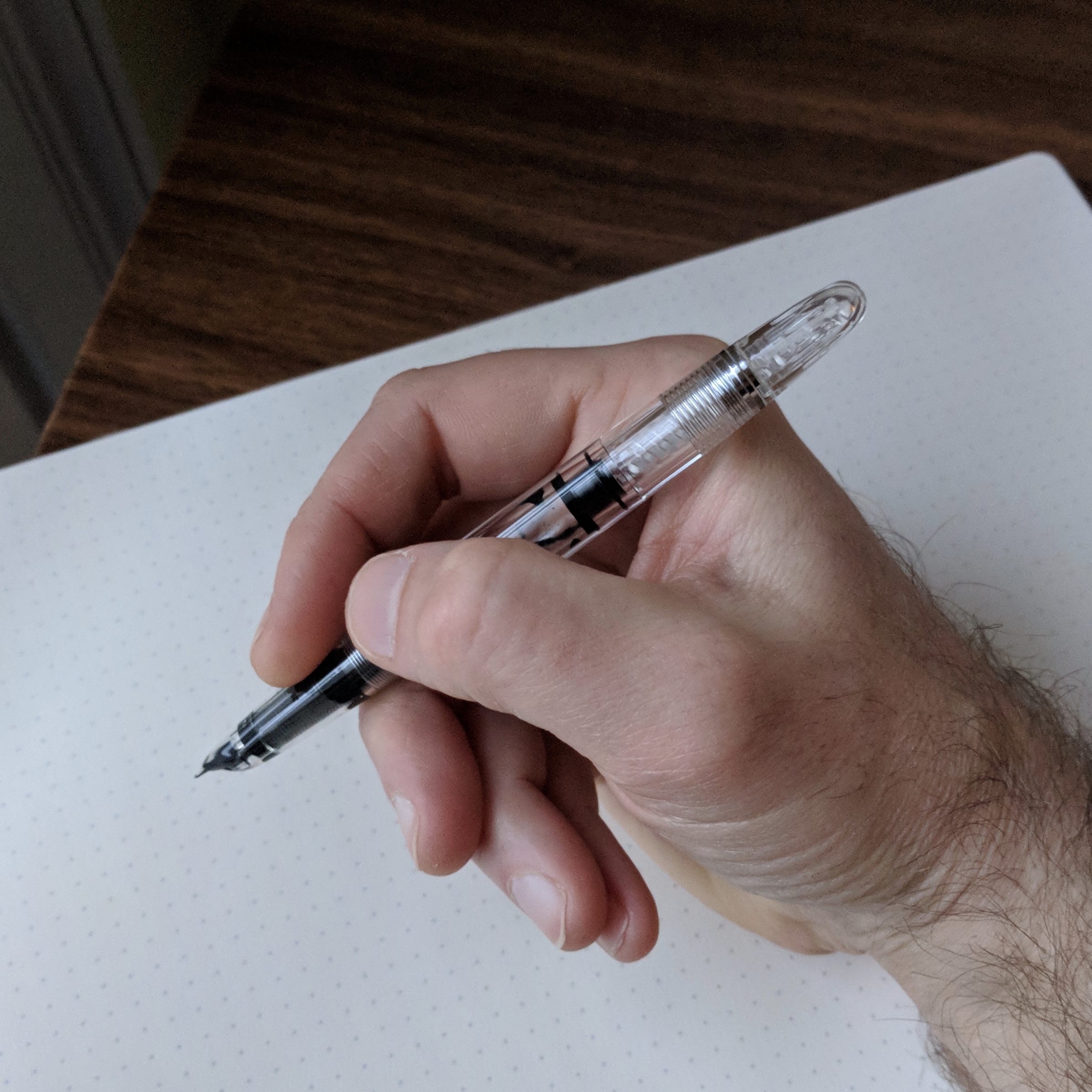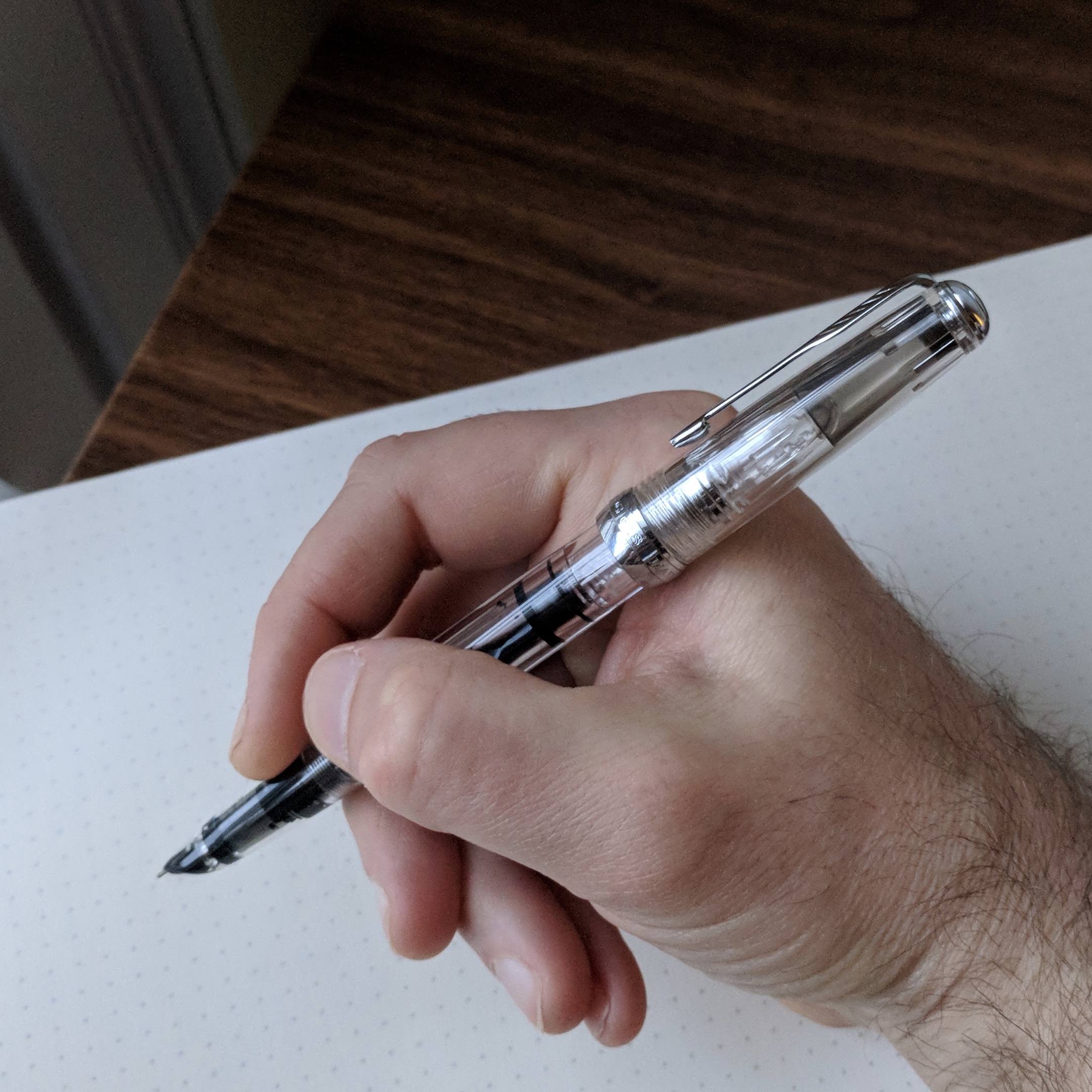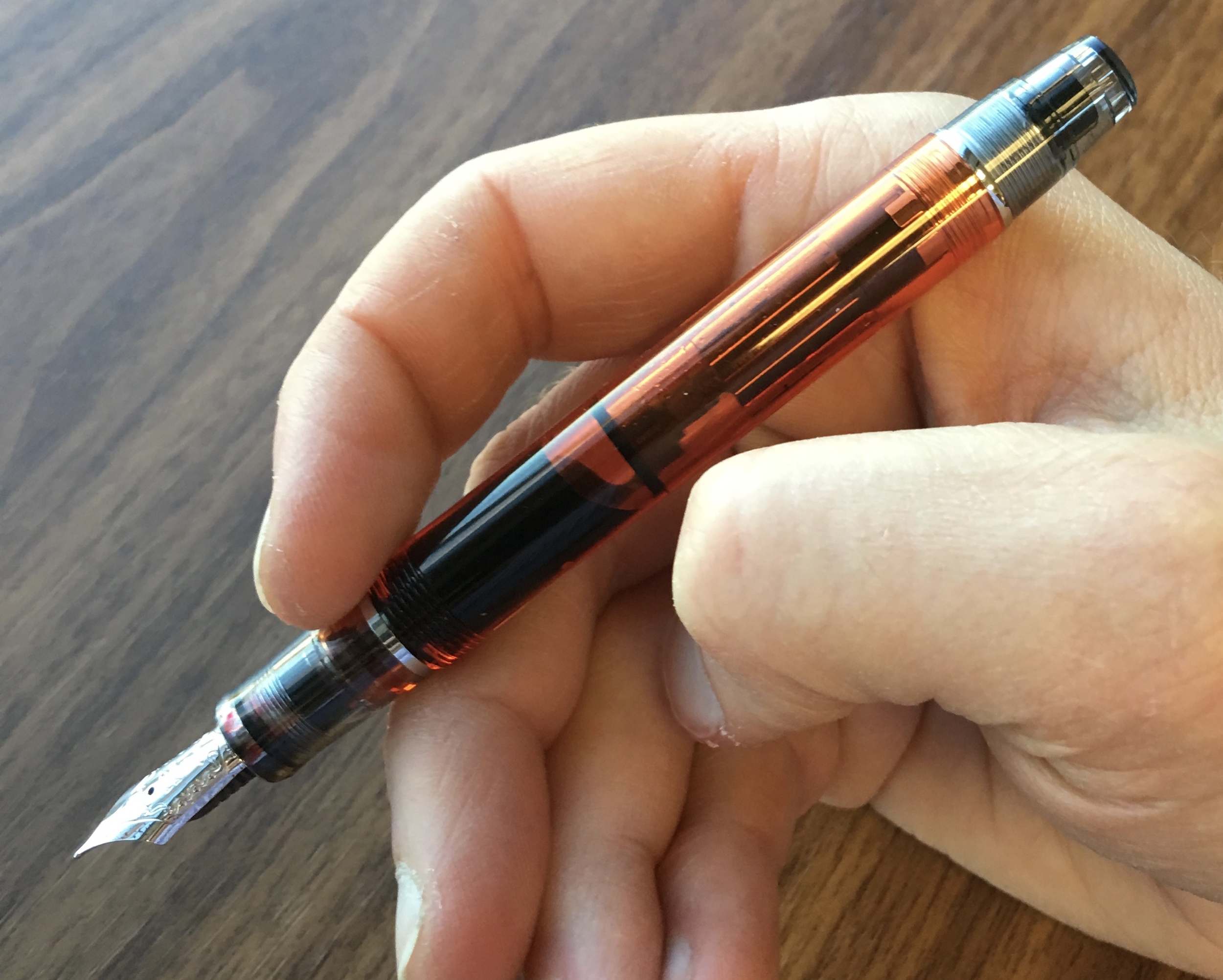If you’ve been following the links in my Deals and Drops posts over the past few months, you might suspect that I've been dabbling in the world of ultra low-cost Chinese pens. You notice I don’t use the word “cheap”, because I don’t necessarily agree with all that term implies, namely low quality. Indeed, the first two pens that I’ve tried recently - two piston filling demonstrators from Wing Sung - are a far cry from the fragile, basically disposable pens that I became familiar with from my early days in this hobby.
Previous Experience
My prior experience with inexpensive Chinese pens was primarily with Jinhao, and as we all know I’m not the biggest fan. I’ve owned some Jinhao pens that were serviceable writers; however, at the same time, I’ve received Jinhao pens with severe flaws in the finish, and the Monteverde Monza / Jinhao 992 has barrel-cracking issues in addition to quality control problems with the nibs. I did purchase a Kaigelu Duofold clone from now-defunct isellpens.com that was an ok writer, but the pen was also extremely heavy due to the brass barrel. Based on my experience so far, the Wing Sung pens are a cut above their competitors: they are relatively well-built, functional pens that I can actually see myself using, provided they hold up over the long term.
Design and Build
For my initial foray back into the Chinese pen market, I opted to try two Wing Sung demonstrators, the Wing Sung 618 and the Wing Sung 698. Both of these pens are attractive. Wing Sung did a good job of polishing the acrylic for this price point, and the clips feel secure. It remains to be seen how the pens will hold up over the long term (i.e., more than a month), but when you’re operating at this price point durability is one of those things you may have to sacrifice (or just assume that it’s reflected in the lower price).
I like that the Wing Sung pens (on the right) sport the clean lines and modern aesthetics of the TWSBI 580 and TWSBI Eco (two pens on the left), but in a slimmer, more streamlined package.
The 618 posts quite well; the 698 doesn't post at all.
The 618 is approximately the same size and shape as the vintage Parker 51, though the addition of the piston filler, threaded cap, and chrome cap band do change the look of the pen by modernizing it quite a bit. I would compare the 698 to a slimmer mash-up of the TWSBI 580 and the TWSBI Eco. I could use both Wing Sung pens very comfortably, though I wish the 698 posted.
While both pens have "Wing Sung" engraved on the barrel, for some reason the 698 has "Lucky" written on the clip.
A note on design. Chinese pen companies have been known for their “liberal” approach to intellectual property rights. With the possible exception of the “Arrow Clip” (which I believe is the subject of an ongoing dispute between Parker and Hero, Wing Sung's affiliated company, dating back to the 1940s), these two pens feature more original design elements than I’m accustomed to seeing, placing 618 pens more into the “homage” or “fantasy pen” category. The 698, to my knowledge, is distinct enough from anything else on the market to stand on its own.
Filling System and Writing Experience
This is where these pens almost lost me. While Wing Sung markets these pens as “piston fillers,” the filling system is a touch janky, for lack of a better term. This filling system is more accurately described, in my opinion, as a hybrid syringe filler / piston filler, since in order to get a “full fill” - and a full fill on these pens holds a lot of ink - you need to hold the blind cap steady and pull the piston out a bit as you turn, or else the blind cap will screw down and stop the piston before the pen is full of ink. It takes a few tries to master, and is tricky enough that I wouldn’t recommend this as a first fountain pen, despite the low price.
UPDATE: Based on reader recommendations, I tried again with the piston on these pens. As it turns out, Wing Sung uses a "locking piston" system, where in order to engage the piston you have to first pull out on the blind cap, after which the pen works like any regular piston filler, with no "syringe" action. Once you fill the pen, you push down on the blind cap to lock it back in place. It's slightly more complex than a typical piston filler, but it does work fairly well. I still wouldn't recommend this pen for beginners, since the instructions from Wing Sung don't offer clear instructions on how to fill the pen (unless you read Chinese). Also, the locking blind cap is held in place by small plastic "teeth," and I'm interested in seeing how those hold up over time.
I love vintage-style hooded sections, and other than the Aurora DuoCart and the Lamy 2000, not many pen companies use them today.
At the end of the day, it took me two or three attempts to get a full fill, and wow, these pens hold a lot of ink. I’ve been writing with the 618 almost non-stop for the past couple of weeks, and it’s still ¼ full. If I’m only refilling these pens once or twice a month, I can live with the temperamental piston.
The nibs are unremarkable, and I’d characterize both as “Western fine”. The nib on my 618 is fairly toothy, and I’ll probably take some micromesh to it to smooth it out. The nib on the 698 writes extremely well unmodified, and looks and feels similar to the nib on a Pilot Kakuno.
Takeaways and Where to Buy
Right now, I’m categorizing this article as my “initial impressions” as opposed to a full review, because I still have some durability concerns about how long these pens will last and I want to revisit them at some point in the future. Given the low price point, I expect that some users will experience cracking in the acrylic, and that others will have problems with the “pistons,” but that’s to be expected with less expensive pens. Even TWSBI took a while to get the QC right at a much higher price point.
That said, my initial impressions are favorable. I’ve enjoyed using these unique pens, both of which have decent nibs that wrote immediately out of the box without any adjustment, which unfortunately is more than you can say for many pens that cost 2-3 times as much. Again, I would not recommend these as anyone’s first piston filling fountain pen - stick with the TWSBI Eco - but if you’re looking to vary your collection with some inexpensive transparent demonstrators, give these a try.
I purchased these pens from Amazon, where prices will vary. (See a link here for the 618 and a link here for the 698.) Though there are other ways to source these pens, I prefer to rely on Amazon when I can because (1) Prime shipping is generally faster, and (2) I like Amazon’s buyer protection services. The 698 is only available as a clear demonstrator, with chrome or gold plated trim, but the 618 comes in a wide range of colors, and I have a transparent dark blue with silver trim version on its way to me, via the slow boat, apparently. Look for more pics and an updated opinion in the future!
Disclaimer: I purchased these pens with my own money, for my own use. This post does contain affiliate links.






